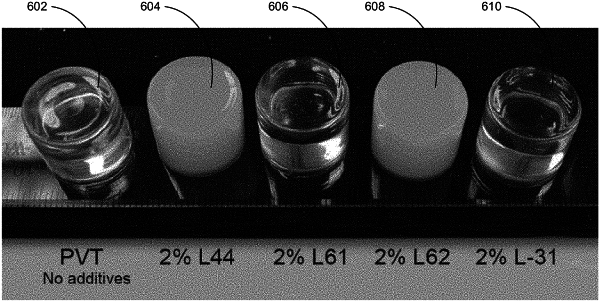| CPC C09K 11/02 (2013.01) [C08J 3/20 (2013.01); C08K 5/353 (2013.01); C09K 11/06 (2013.01); G01T 1/2033 (2013.01); C09K 2211/1007 (2013.01); C09K 2211/1018 (2013.01)] | 24 Claims |

|
1. A plastic scintillator, comprising:
a polymer matrix;
an aliphatic additive present in the aromatic polymer matrix in an effective amount to impart fog resistance to the plastic scintillator,
wherein the effective amount is in a range of greater than 0 weight percent up to 5 weight percent relative to the total weight of the plastic scintillator,
wherein the aliphatic additive is a block copolymer having a hydrophilic unit and a hydrophobic unit,
wherein the aliphatic additive has a structure comprising up to about 300 repeat subunits, the hydrophilic unit comprising repeat hydrophilic subunits and the hydrophobic unit comprising repeat hydrophobic subunits, wherein the hydrophilic subunit is an ethylene oxide subunit, and the hydrophobic subunit is selected from the group consisting of: a propylene oxide subunit and a butylene oxide subunit; and
at least one fluorescent dye in the aromatic polymer matrix, the dye being effective to provide scintillation upon exposure to radiation.
|